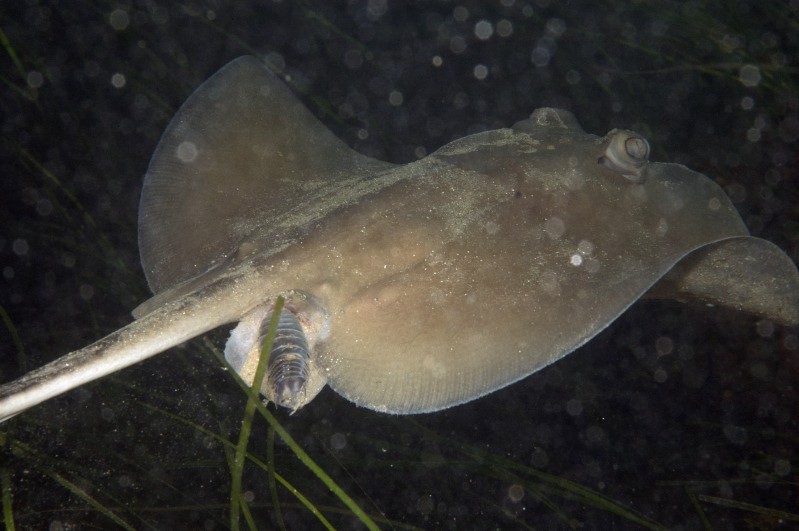Sparsely-spotted stingaree
A species of Coral sea stingaree, Also known as Dixon's stingaree Scientific name : Urolophus paucimaculatus Genus : Coral sea stingaree
Sparsely-spotted stingaree, A species of Coral sea stingaree
Also known as:
Dixon's stingaree
Botanical name: Urolophus paucimaculatus
Genus: Coral sea stingaree
Content
Description
 Photo By Julian Finn / Museum Victoria , used under CC-BY-4.0 /Cropped and compressed from original
Photo By Julian Finn / Museum Victoria , used under CC-BY-4.0 /Cropped and compressed from original Description
The sparsely-spotted stingray has a more or less diamond-shaped pectoral fin disc wider than long, with rounded outer corners. The anterior margins of the disc are nearly straight and converge at an obtuse angle on the fleshy snout, the tip of which barely protrudes from the disc. The small eyes are immediately followed by comma-shaped spiracles with angular or rounded posterior rims. The outer rim of each nostril is enlarged into a knob towards the back. Between the nostrils is a bell-shaped curtain of skin with a finely fringed trailing margin; only the Kapala stingaree (U. kapalensis) has a similarly shaped nasal curtain. The small mouth contains five or six papillae (nipple-like structures) on the floor, most of which have forked tips. Additional small papillae are present on the outside of the lower jaw. The teeth in both jaws are small with roughly oval bases, and are arranged in a quincunx pattern. The five pairs of gill slits are short. The pelvic fins are small and rounded. The tail measures 77–98% as long as the disc; it is very flattened at the base and slender towards the tip, which bears a deep, leaf-shaped caudal fin. There is a prominent fold of skin running along either side of the tail, and a serrated stinging spine placed on the upper surface about halfway along its length. There is no dorsal fin. The skin is completely devoid of dermal denticles. This species is uniformly light gray above with a darker V-shaped marking between the eyes, and white below with slightly darker lateral disc margins. Most rays from the southern portion of its range also have a handful of small, regularly arranged spots atop the disc, each white with a dark border. Juveniles have a black caudal fin, which lightens with age (except sometimes for the margin). The largest individual on record was 57 cm (22 in) long.
* Disclaimer: The judgment on toxicity and danger is for reference only. We DO NOT GUARANTEE any accuracy of such judgment. Therefore, you SHALL NOT rely on such judgment. It is IMPORTANT TO SEEK PROFESSIONAL ADVICE in advance when necessary.
Scientific Classification
Phylum
Chordates Class
Sharks and rays Order
Stingrays and relatives Family
Stingarees Genus
Coral sea stingaree Species
Sparsely-spotted stingaree